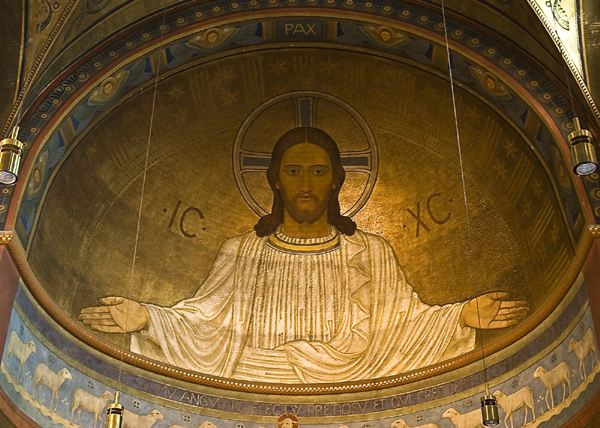Halfway between the birthday of Our Lady on September 8th and the memorial of Our Lady of Sorrows on September 15th, I’d like to introduce the Seven Sorrows of Our Lady chaplet, and explain how to pray it. Since September is particularly dedicated to Our Lady of Sorrows, this is the perfect month to learn how to pray this chaplet. It commemorates the seven swords that pierced the heart of Our Lady as she suffered with her son.

How to pray the Chaplet
This chaplet is somewhat similar to the Rosary, although using Rosary beads for it can be a little confusing. The reason is that for this chaplet, you pray seven sets of seven Ave Marias, and the ten-plus-one beads of the usual Rosary or tenner doesn’t lend itself very well to the purpose. But what did the Lords gave us fingers for?
When you start the chaplet, make the sign of the cross and pray:
“Mary, who was conceived without sin and who suffered for us, pray for us.”
Then say the Sorrow you are meditation on, and pray seven Ave Marias. At the conclusion of each set of seven, pray:
“Holy Mother hear my prayer, and renew in my heart each wound of Jesus my Savior.”
Repreat this until you have meditated on all seven Sorrows.

What to Meditate On
In this chaplet, we remember each of the seven sorrows of Our Lady while praying the seven Aves mentioned above. These are:
- The Prophecy of Simeon (Luke 2:34-35)
- The Flight to Egypt (Matthew 2:13-21)
- The Loss of Jesus for Three Days (Luke 2:41-50)
- The Carrying of the Cross (John 19:17)
- The Crucifixion of Jesus (John 19:18-30)
- Taking Jesus Down from the Cross (John 19:39-40)
- Placing Jesus in the Tomb (John 19:39-42)

How to Conclude the Chaplet
When you are done with the last Sorrow, pray this closing prayer:
“O Mary, you truly became the Queen of all martyrs as these seven bitter swords of sorrow pierced your Immaculate Heart! By the merits of your tearful distress obtain for us and for all sinners the graces of perfect contrition and conversion. Help us always, dear Mother, to imitate you by taking up our crosses and following Jesus with limitless love and generosity. Amen.”

Short Version
If you are looking for a short prayer to pray this month in particular, or to add to your usual Rosary, the opening prayer, said three times, may serve, so I will repeat it here once more:
“Mary, who was conceived without sin and who suffered for us, pray for us.”



























